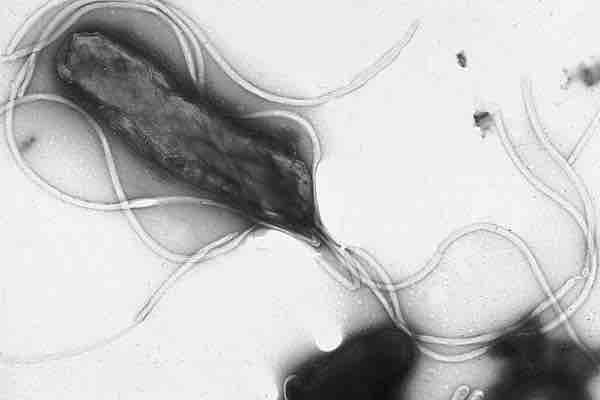Bacterial morphological plasticity refers to evolutionary changes in the shape and size of bacterial cells. As bacteria evolve, morphological changes occur to maintain the consistency of the cell. However, this consistency could be affected in some circumstances (such as environmental stress) and changes in bacterial shape and size. In bacteria, the transformation into filamentous organisms have been recently demonstrated. These are survival strategies that affect the normal physiology of the bacteria in response to factors such as innate immune response, predator sensing, quorum sensing and antimicrobial signs.
Normally, bacteria have different shapes and sizes which include coccus, rod and helical/spiral (among others less common). This forms the basis for their classification. For instance, rod shapes may allow bacteria to attach more readily in environments with shear stress (e.g., in flowing water). Cocci may have access to small pores, creating more attachment sites per cell and hiding themselves from external shear forces. Spiral bacteria combine some of the characteristics of cocci (small footprints) and of filaments (more surface area on which shear forces can act) and the ability to form an unbroken set of cells to build biofilms. Several bacteria alter their morphology in response to the types and concentrations of external compounds. Bacterial morphology changes help to optimize interactions with cells and the surfaces to which they attach. This mechanism has been described in bacteria such as Escherichia coli and Helicobacter pylori .

Electron micrograph of H. pylori possessing multiple flagella (negative staining)
Several bacteria alter their morphology in response to the types and concentrations of external compounds.This has been described in bacteria such as E. coli and H. pylori.
Oxidative stress, nutrient limitation, DNA damage and antibiotics exposure are some stress conditions to which bacteria respond, altering their DNA replication and cell division. Filamentous bacteria have been considered to be over-stressed, sick and dying members of the population. However, the filamentous members of some communities have vital roles in the population's continued existence, since the filamentous phenotype can confer protection against lethal environments.Filamentous E. coli can be up to 70 µm in length and has been identified as playing an important role in pathogenesis in human cystitis. There are different mechanisms identified in some bacteria that are attributable to the development of filamentous forms.
Nutritional stress can change bacterial morphology. The most frequent shape alteration may be filamentation triggered by a limitation in the availability of one or more nutrients. Since the filament can increase a cell's uptake–proficiency surface without changing its surface-to-volume ratio appreciably, this may be enough reason for cells to be filament. Moreover, the filamentation benefits bacterial cells attaching to a surface because it increases specific surface area in direct contact with the solid medium. In addition, the filamentation may allow bacterial cells to access nutrients by enhancing the possibility that the filament will be exposed to a nutrient-rich zone and pass compounds to the rest of the cell's biomass. For example, Actinomyces israelii grows as filamentous rods or branched in the absence of phosphate, cysteine, or glutathione. However, it returns to a regular rod-like morphology when adding back these nutrients.